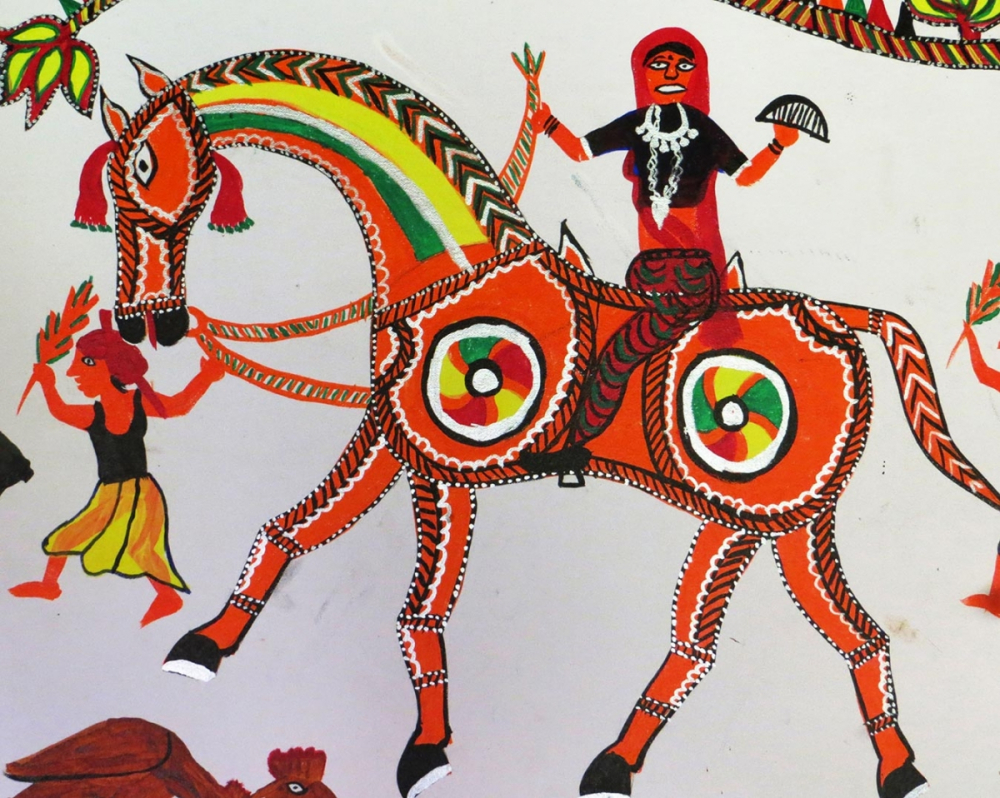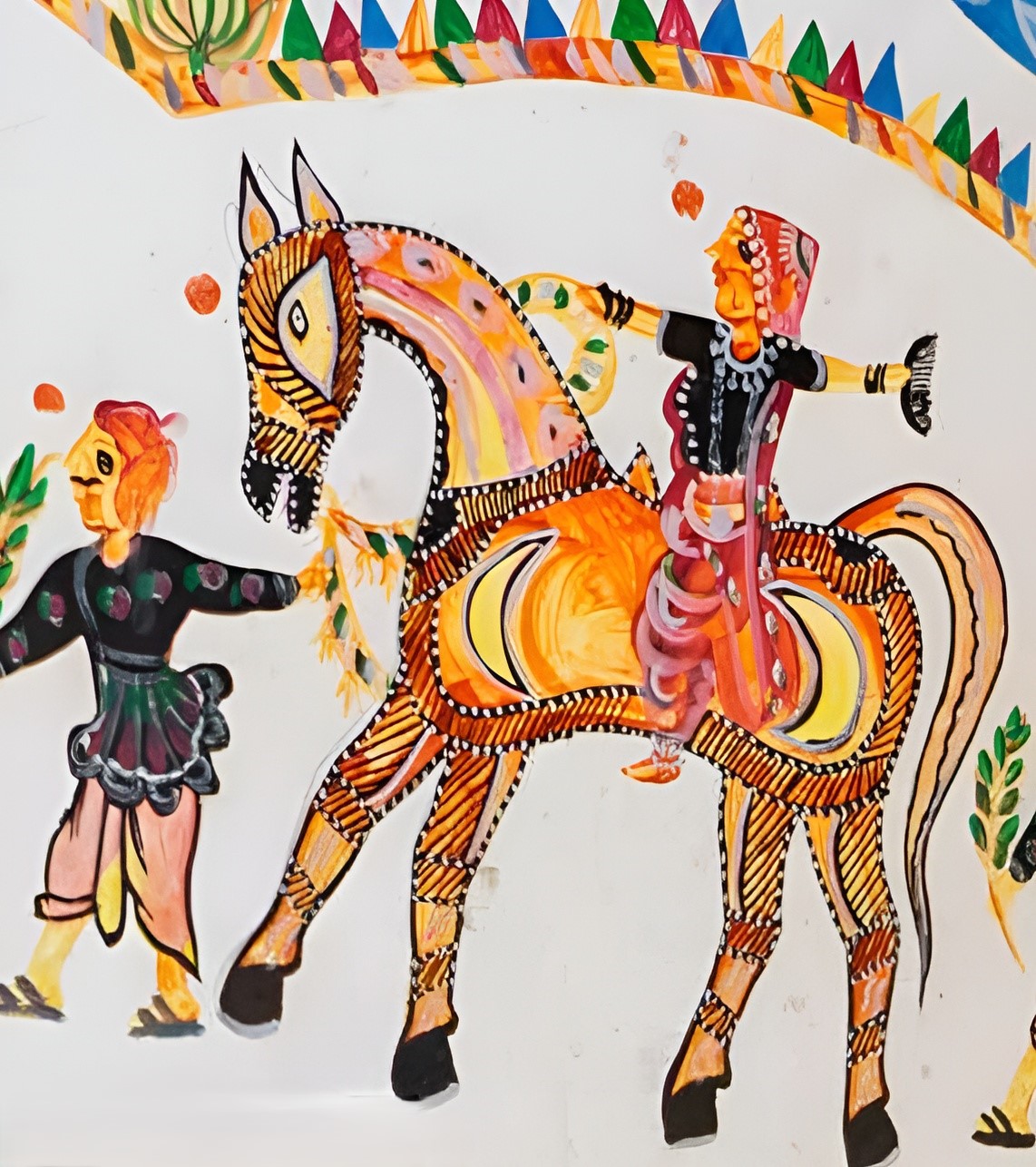
tribal paintings
Rani Kajal, gujarat

The Rani Kajal motif comes from the Pithora paintings which are ritualistic folk art forms of the Rathwa people in Gujarat. Rani Kajal is depicted like a mother figure as the foster mother of Baba Pithora in the legend surrounding him. Such wall paintings in a tribal setting are created as part of sacred ceremonies in celebration of deities and gods ancestral spirits that encompass cultural heritage and religious devotion. Rani Kajal is holding a comb; it symbolizes purification or care in terms of defense and protection for the community; thereby, such image calls for devotion, maternal care, and gratitude from the tribe towards her for her contribution to Baba Pithora's upbringing.

The motifs do interweaving mythology through nature, everyday life, and cosmic beliefs for a living tapestry that speaks so much of spiritual link. The painting is created on earth wall first prepared with cow dung and chalk as a ritual, "Lipan." The unmarried women clean and prepare the walls, and the men make the designs, using natural pigments. Rani Kajal and other gods thus created would glow with the bright blaze of space that these colors and designs complement. The Rani Kajal motif is taken in prayer during thanksgiving ceremonies primarily that result from rain or harvest bounty.

Through her maternal relation with Baba Pithora, the icon reflects motifs of nurture and endurance, and the temple nearby along Narmada River has been established as the pilgrim site. The Rathwa's cosmic order and spiritual practices are captured in this ritual art. The picture of Rani Kajal contains a myth with household activities and cosmic ideas; this has all been into a bright distance by the vivid colors, symmetry, and artistry. The emphasis is on painting as storytelling and myth, yet it takes into the shrine and social context of the Rathwa tribe. Each individual motif is unique; all derive their roots from collective tradition and celebrate life, divinity, and ancestral wisdom.


